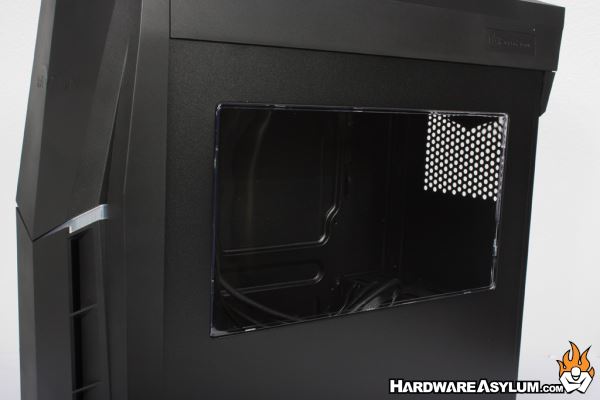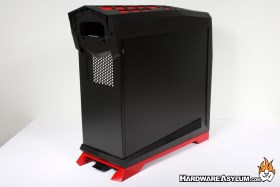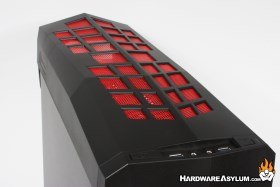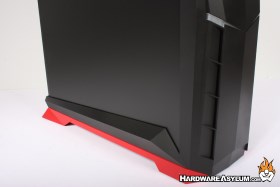Silverstone Raven RVX01 Case Review
Author: Dennis GarciaCase Layout and Features
One of the underlying principles of the Raven series is to experiment with new case designs and see what works. The designs may not appeal to a broad market but have always brought with it modern styling and advanced technology. Many people have responded well to the RV05 so it is no wonder why the RVX01 looks a lot like it.
In terms of total volume the Raven RVX01 is of average size for a mid-tower with a volume of 52.1 Liters. That is over 11 Liters smaller than the Raven 5 which is difficult to see when looking at the case in a photo.
The space savings comes from a variety of locations including the 120mm air penetrator fans which are used in place of the massive 180mm versions common to the Raven series.
A great feature of the Raven is how the back of the case is completely flat with the exception of a single cooling vent. Normally this is where you would see expansion cards and the I/O connections but instead is a clean slate for fancy artwork, stickers or external radiators.
By rotating the motherboard you improve the natural convection cooling inside your case and also force the I/O connections to be located under a removable panel at the top of the case. When done correctly all of the cables will exit neatly out the back in a single clean bundle.
The top of the Raven RVX01 features a mesh covered panel that is not only the primary exhaust for the case but is also a decorative cover for the I/O and all of the cables.
At the bottom of the case you will find color matched case feet with an attached decoration that obscures the bottom of the side panel.

The Silverstone Raven RVX01 is available with or without a side window allowing you to choose how modest you want to be with your PC components. Due to some internal components the factory window is only exposing the upper half of the system and terminates before showing the motherboard I/O connections or, at least if you are looking at the case straight on.





